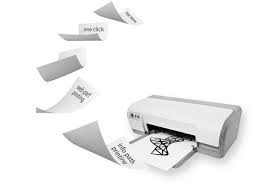 Number of pages printed by hardcopy devices continued to decrease last year despite gains in developing regions.
Number of pages printed by hardcopy devices continued to decrease last year despite gains in developing regions.
IDC has announced that page volume has continued to slow worldwide, particularly in developed regions, falling from 3.03 trillion in 2011 to 2.98 trillion in 2012 – a year-over-year decline of -1.5 percent, as businesses turn to digital workflows and MPS and economies continued to struggle.
Despite these findings, people all over the world are still printing in large amounts, with IDC claiming that annual A4 printed pages would be able to cover the surface area of New York 237 times; and users of smartphone and tablet devices are now generating more print volume than those who do not use mobile devices, with over 50 percent of smartphone and tablet business users expected to use mobile printing in the office by 2015. However, over 50 percent of smartphone users and 35 percent of tablet users indicated that they do not know how to print from their mobile devices and would require help.
In developing countries, print volumes helped to counter the overall worldwide decline, with the Asia/Pacific (excluding Japan) recording a 10 percent year-over-year page growth and Latin America following with a 6.7 percent growth; although page growth slowed slightly in Central and Eastern Europe, the Middle East and Africa (CEMA), with a -0.72 percent decline. In the previous year, all developing regions experienced growth.
Worldwide page volume is forecasted to remain flat in 2013 to 2017, while the Asia/Pacific (excluding Japan) region is expected to take over the US in having the highest share of page volume by 2015, with IDC predicting China and India to be the major growth countries in the region.
In terms of technology, monochrome laser will continue to have the largest share of pages between 2013 and 2017 due to more devices being installed, although pages are forecast to decline. While colour laser has a small portion of the installed base and total pages, it has the best outlook and is expected to see page growth. Inkjet’s install base and pages meanwhile are forecast to decline over the period.
Worldwide laser MFPs recorded a positive growth in pages of two percent, with developing countries seeing double-digit growth of 13.2 percent, and developing countries recording an 11.3 percent growth in mono and 23.2 percent growth in colour. Worldwide colour inkjets yielded to colour inkjet MFPs, particularly in developing countries, which saw a drop in inkjet printer pages of -11.5 percent.
HP retained its leading position for overall worldwide page share in 2012, displacing Xerox as the leader in the colour laser segment due to an increase in MFP devices. Canon and Xerox took second and third place; while an increase in shipments allowed Samsung to displace Xerox in the top three A4 Mono MFP page position.
